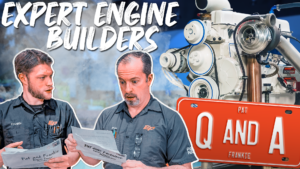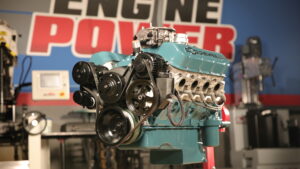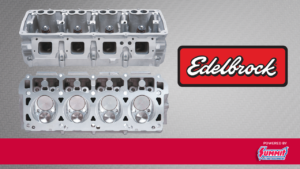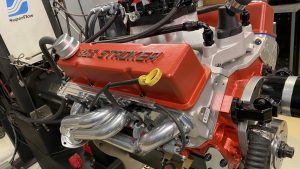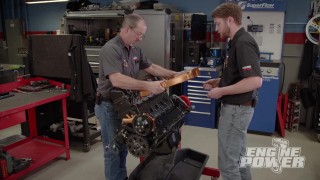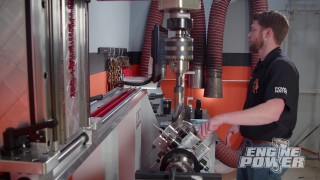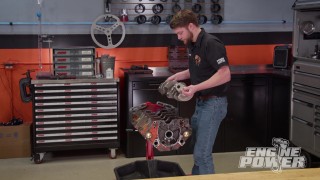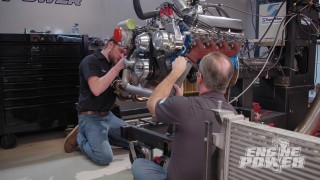Top 5 Engine Upgrades For the Money
Whether it’s your daily driver or a project car, we all have aspirations to improve our vehicles. For some, it might be something simple like rims, while others seek to boost their engine power with a pair of headers. However, you might be wondering what five engine parts have the best value for the money?
Fortunately, Team Summit NHRA Funny Car driver Tim Wilkerson and Pat Topolinski from Engine Power discuss these answers in their most recent Tech Tips video to guide you through your project.
1.) Exhaust Headers
Are headers worth the performance improvement? The answer to that question is yes.
Since engines are comparable to air pumps, the engine that provides the most efficiency in terms of power and economy is one that can get air in and out of the cylinders the easiest. This is why performance modifications like cold air intake systems, cat-back exhaust systems, and headers are geared toward making the intake and exhaust less restrictive.
These parts increase the flow of air into our engine and ease the flow of exhaust gas to be removed from the engine. Among the components we discuss, headers will be among the most challenging to install due to fitment issues.
Long Tube Headers
Long tube, or full length headers are more expensive when compared to short tube headers, and they’re the most difficult to install. Long tube headers require exhaust pipes to be cut and flanges attached where they join with the header collector. However, one such benefit is the improved power through the low to mid RPM range.
Although long tube headers are better for maximum performance, the amount of power increase depends on the intake system, camshaft design, cylinder head ports, and how restrictive the stock exhaust manifold is. A quality set of headers should yield you an increase of 10-20 horsepower, and if you don’t have a lead foot, you could see an increase in fuel mileage.
Short Tube Headers
Short tube, or shorty headers are still a decent length, but they’re not long enough to create that full scavenging effect you’ll get from long tube headers. However, before you discount their capabilities, they can boost power over stock exhaust manifolds and fit better than long tubes with modern engine components, which is a real benefit in newer vehicles that lack long front ends and space under the hood.
Short tube headers were designed to connect to exhaust pipe flanges that exist in most vehicles today, which makes welding or cutting unnecessary. The diameter size of the header tube will affect scavenging and flow. Since larger tubes are better for high RPMs, smaller tubes excel at maintaining exhaust gas velocity for better low-end torque numbers.
2.) Induction System
For newer vehicles, fuel induction systems are so complex and produce such efficiency in motors that you may not need to upgrade them too much. However, in older vehicles, four-barrel intake manifolds can help the engine breathe and provide you with small performance gains in your engine.
Four-Barrel Intake Manifold
One of the easiest upgrades on any two-barrel V8 American engine is changing the stock two-barrel carburetor setup to a four-barrel intake manifold. One such advantage of this conversion is a modest horsepower increase. Upgrading from a two-barrel to a four-barrel adds good performance for cheap.
Four-barrel manifolds are relatively inexpensive and plentiful, and many stock carburetors will handle the engine’s slight increase in horsepower, which is true of a stock engine or one with minor modifications. Installation is simple, and most will bolt right on with minimal effort.
3.) Ignition System / Spark Plugs
Most people don’t think about their spark plugs. However, these small parts play a significant role in how your car functions. Without properly running spark plugs, your car most likely wouldn’t run.
Your spark plugs cause the spark that ignites the engine’s air/fuel mixture, which creates the explosion to produce power. The small and simple plugs create an arc of electricity across two leads that don’t touch, yet are close enough together where electricity jumps the gap between them. The spark plugs, as well as other electrical and timing equipment that powers them, are known as the “ignition system” of your vehicle.
Extended-life spark plugs are rated for 100,000 miles, and as the plugs reach the end of their life, the gap begins to widen, causing a reduction of efficiency and potential misfire. If the plug corrodes to the point it breaks, it may cause serious damage to the interior of your engine’s cylinder, leading to an expensive repair.
When selecting new spark plugs, make sure they’re compatible with your vehicle. Those using precious metals like iridium or platinum will cost more than ones using copper, but they withstand wear much better. Without the right ignition system, none of the induction or exhaust upgrades will make a difference.
4.) Valvetrain
The valvetrain refers to an assembly of components that are designed to open and close the intake and exhaust valves, and it can really wake up an engine. A majority of engines produced today have overhead cam assemblies. However, other designs place the camshaft in the engine block and use pushrods and move valve assemblies. The camshaft is rotated by a timing chain, timing belt, or direct gear.
If you’re building a high-performance engine, you should always upgrade the valvetrain to support other modifications.
Camshaft
The camshaft was designed with precisely machined lobes, responsible for controlling the valve opening. It plays a significant role in the character and behavior of your engine.
The number of lobes on a shaft will be determined by the amount of valves the shaft controls. In some cases, the engine will use a single shaft to control both the exhaust and intake, while others have dedicated camshafts for every valve type. An engine that has four valves per cylinder is typically equipped with dual camshafts for every row of cylinders.
Upgrading your cam will help maximize your performance experience and allow you to support other modifications. It’s typically the next step after improving your cold air intake and exhaust systems. An upgraded camshaft has longer duration and higher lift. This allows more air/fuel flow into the combustion chamber, which translates to a lot more power for a reasonable price.
5.) Chrome Gets You Home
Some of us want our engines to look as good as they sound and perform. If you’re going all in and upgrading the exhaust, induction & ignition system, and valvetrain to get it home fast, you might as well get it home shiny too.
You can do this by upgrading your valve covers, air cleaners, and adding some chrome radiator hoses for good measure. In this case, chrome does get you home.
